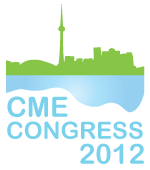Allison Eades (AXDEV Group); Andrew Crim (University of North Texas Health Science Center); Pamela McFadden (University of North Texas Health Science Center); Sean Hayes (AXDEV Group)
Synopsis
In medical education, case studies are recognized as an educational activity to increase clinical skills. This report outlines how a case study was used as a research method to support the development of an educational initiative on pneumococcal risk reduction in patients with cancer by increasing its alignment with clinical practice in oncology.
Purpose
In the US, the most significant cause of vaccine-preventable deaths is invasive pneumococcal disease (IPD)i with an estimated 44,000 cases and 5,000 deaths reported in 2009ii. Individuals undergoing chemotherapy or radiation therapy are particularly susceptible to IPD. Guidelines state that individuals receiving treatment should be immunized against streptococcus pneumonia,i,ii,iii however studies suggest that a significant number of individuals are not immunized or asked about their immunization statusiv,v,vii,viii. To validate developed CME content on pneumococcal risk reduction (PRR), and to ensure applicability and relevance for clinicians, a need for an in-depth understanding of clinical practice was identified.
Methods
An IRB approved clinical case study was undertaken with a large oncology practice in North Texas to determine practice behaviors, attitudes, and perceptions towards PRR. The case study was comprised of a focus group, naturalistic observation (3 days), and informal interviews.
Results
Findings revealed a lack of procedures/protocols related to PRR. The perception of value for PRR was reported as high, but its priority for medical oncologists was reported to be low. Immunization was recognized as critical for PRR, yet a need for increased knowledge about: target populations for immunization, impact of double dosage, and timing for administering vaccines in patients undergoing chemotherapy was identified. There was also a perception of ongology’s accountability for immunization.
Conclusions
Findings confirm the value of the educational content developed and alignment with elements identified in a clinical tool — developed by an interdisciplinary group to support healthcare providers in PRR activities — while highlighting concepts of consideration for its improvement.
Funding Sources
This program and case study were supported by an educational grant from Pfizer.
References
- i CDC (2010). Active bacterial core surveillance (ABCS) report: Emerging infections program network.
- ii CDC. (2009). Pneumococcal polysaccharide vaccine information statement.
- iii CDC. (1997). Prevention of pneumococcal disease: Recommendations of the Advisory Committee on Immunization Practices (ACIP). Morbidity and Mortality Weekly Report, 46(RR-08), 1-24
- iv Yee et al (2010). Lack of compliance with national vaccination guidelines in oncology patients receiving radiation therapy. Journal of Supportive Oncology, 8(1): 28-34.
- v Mieczkowskia et al. (2002). Adult pneumococcal vaccination: A review of physician and patient barriers. Vaccine, 20, 1383-1392.
- vi Zimmerman et al. (2001). A comprehensive investigation of barriers to adult immunization. Journal of Family Practice, 50(8), 703.
- vii CDC (1999). Reasons reported by medicare beneficiaries for not receiving influenza and pneumococcal vaccinations. Morbidity and Mortality Weekly Report, 48(39), 556-890
- viii Rushtonaetal.(1994).Barrierstoimmunization—anexaminationoffactorsthatinfluencetheapplication of pneumococcal vaccine by house staff. Vaccine. 12(13), 1173-1179.





